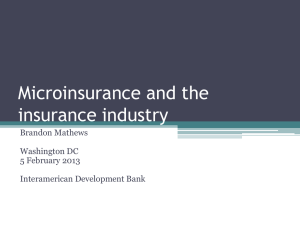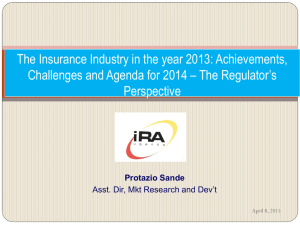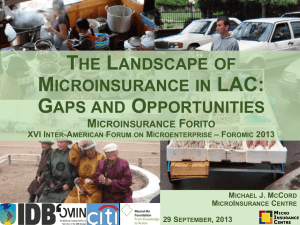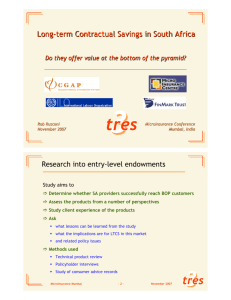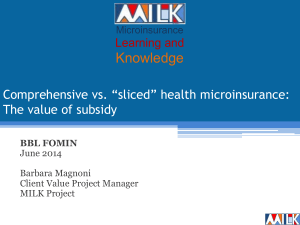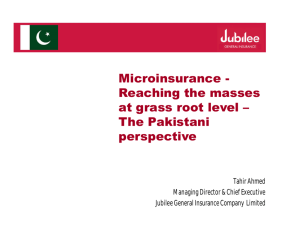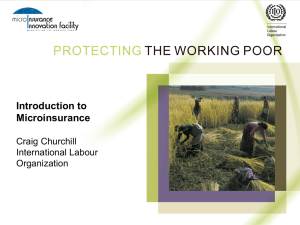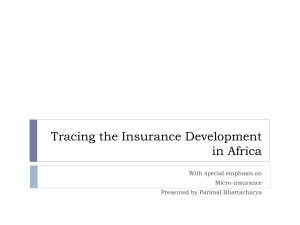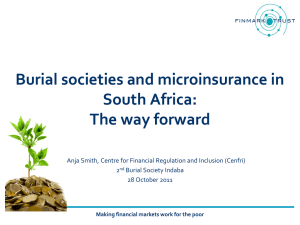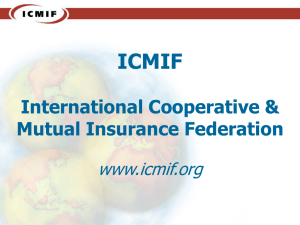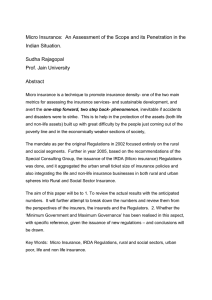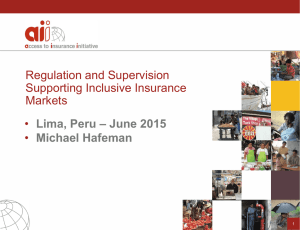BUILDING AN INCLUSIVE INSURANCE MARKET IN ETHIOPIA 21
advertisement
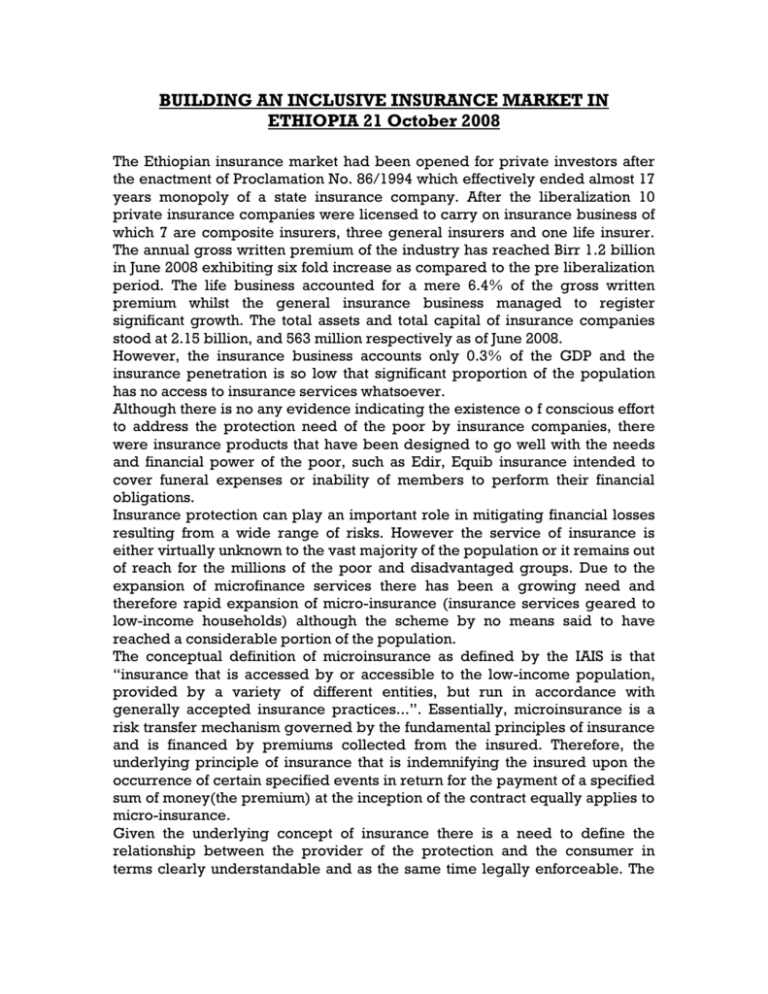
BUILDING AN INCLUSIVE INSURANCE MARKET IN ETHIOPIA 21 October 2008 The Ethiopian insurance market had been opened for private investors after the enactment of Proclamation No. 86/1994 which effectively ended almost 17 years monopoly of a state insurance company. After the liberalization 10 private insurance companies were licensed to carry on insurance business of which 7 are composite insurers, three general insurers and one life insurer. The annual gross written premium of the industry has reached Birr 1.2 billion in June 2008 exhibiting six fold increase as compared to the pre liberalization period. The life business accounted for a mere 6.4% of the gross written premium whilst the general insurance business managed to register significant growth. The total assets and total capital of insurance companies stood at 2.15 billion, and 563 million respectively as of June 2008. However, the insurance business accounts only 0.3% of the GDP and the insurance penetration is so low that significant proportion of the population has no access to insurance services whatsoever. Although there is no any evidence indicating the existence o f conscious effort to address the protection need of the poor by insurance companies, there were insurance products that have been designed to go well with the needs and financial power of the poor, such as Edir, Equib insurance intended to cover funeral expenses or inability of members to perform their financial obligations. Insurance protection can play an important role in mitigating financial losses resulting from a wide range of risks. However the service of insurance is either virtually unknown to the vast majority of the population or it remains out of reach for the millions of the poor and disadvantaged groups. Due to the expansion of microfinance services there has been a growing need and therefore rapid expansion of micro-insurance (insurance services geared to low-income households) although the scheme by no means said to have reached a considerable portion of the population. The conceptual definition of microinsurance as defined by the IAIS is that “insurance that is accessed by or accessible to the low-income population, provided by a variety of different entities, but run in accordance with generally accepted insurance practices...”. Essentially, microinsurance is a risk transfer mechanism governed by the fundamental principles of insurance and is financed by premiums collected from the insured. Therefore, the underlying principle of insurance that is indemnifying the insured upon the occurrence of certain specified events in return for the payment of a specified sum of money(the premium) at the inception of the contract equally applies to micro-insurance. Given the underlying concept of insurance there is a need to define the relationship between the provider of the protection and the consumer in terms clearly understandable and as the same time legally enforceable. The provider has also to make sure that the premiums are sufficient to cover the expected claims and as the same time affordable to the target groups. The proliferation of small and medium enterprises and the rising needs for credit plus the potential demand for protecting the lives of debtors present an enormous opportunity for the expansion of microinsurance business. Besides, the cooperatives currently burgeoning in all regions of the country will play great role in making access to the population who are expected to benefit from the protection provided by insurance. On the other hand, conventional insurers will also play critical role as providers of microinsurance in addition to the microfinance institutions that currently provide a quasi life insurance cover to their borrowers. The expenses related to delivering insurance products to the low income group are by far the critical factor that hampers the involvement of conventional insurers in this segment of the business. Nevertheless, the expertise and branch networking of insurers to a great extent determine the viability and sustainability of any insurance product. Thus, it is very important to ensure active participation of insurers so as to make them the actual risk carriers and to guarantee the long term viability of microinsurance as venture making economic sense. The challenge for any new market is therefore to design and at the same time affordable insurance products specifically tailored to the needs of the lower income group that will be delivered through inexpensive delivery channels. It is also equally important that the regulation of the business should not be complicated to preempt the advantages obtained in the process of designing and marketing insurance products. The regulatory focus should therefore be limited to minimum prudential and market conduct requirements for doing microinsurance business. Although the design and manner of offering the products should be a matter to be explored later there is however a general agreement on the supervision of the business aimed at protecting policyholders and promoting public confidence in this particular segment. Thus, any initiative with the object of expanding microinsurance must also take account of the regulatory aspect of the business. The National Bank of Ethiopia as a supervisor of the financial sector is responsible to initiate policy debates on the promotion of microinsurance and ensure synergy with other policy initiatives directed at poverty alleviation. To this end the following issues are of prime importance: Ensuring synergy with other national policy initiatives directed at poverty alleviation; Identification of providers of cover(risk carriers) and cost effective delivery channels; Extensive promotion of public awareness of insurance; Ensure viability and sustainability of microinsurance business and at the same time ensuring affordability; Establishing legal framework governing the conduct of business; Streamlining the cover currently being offered by various institutions not licensed to do insurance business; Designing of insurance products that meet the needs of the low income group and so on. There is therefore a need to launch a concerted effort to explore ways as to how the above said objectives can effectively be met. The purpose of this workshop I think is to serve as a launching pad for the national initiative on microinsurance. I thank you!
